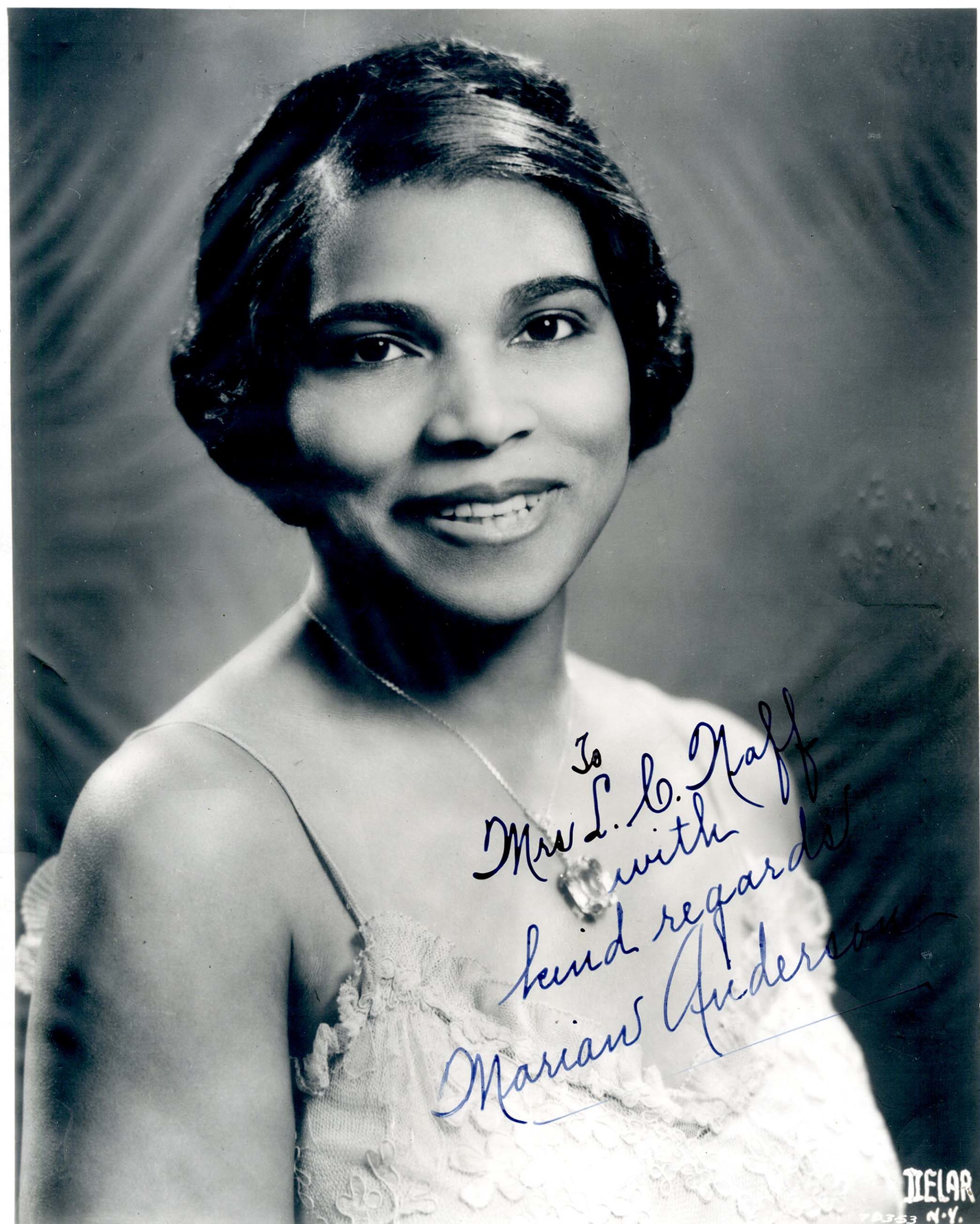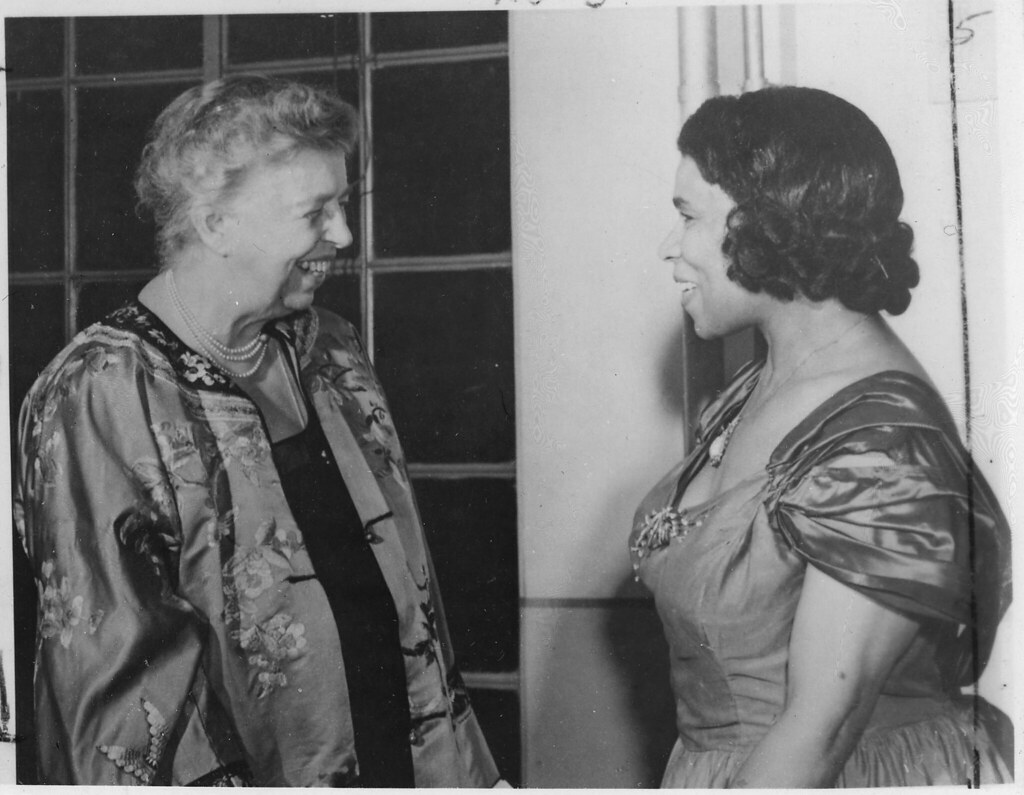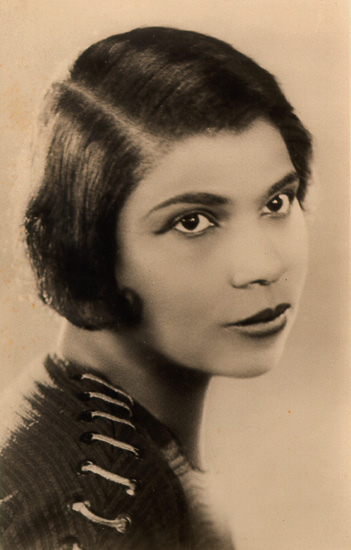Marian Anderson History



Marian Anderson was an African-American contralto and one of the most celebrated singers of the 20th century. She was born on Feb. 27, 1897, in Philadelphia, Pennsylvania. In 1925, Anderson got her first big break when she won first prize in a singing competition sponsored by the New York Philharmonic. As the winner, she was able to perform in concert with the orchestra on Aug. 26, 1925, a performance that scored immediate success with both audience and music critics. Over the next several years, she made a number of concert appearances in the United States, but racial prejudice prevented her career from gaining much momentum. In 1928, she sang for the first time at Carnegie Hall. Eventually, she decided to go to Europe where she spent a number of months studying voice before launching a highly successful European singing tour.
In the late 1930s, Anderson gave about 70 recitals a year in the United States. Although by then quite famous, her stature did not completely end the prejudice she confronted as a young black singer touring the U.S. She was still denied rooms in certain hotels and was not allowed to eat in certain restaurants. Because of this discrimination, Albert Einstein, a champion of racial tolerance, hosted Anderson on many occasions, the first in 1937 when she was denied a hotel before performing at Princeton University. She last stayed with him months before he died in 1955.
In 1939, the Daughters of the American Revolution (DAR) refused permission for Anderson to sing to an integrated audience in Constitution Hall. The incident placed Anderson into the spotlight of the international community on a level unusual for a classical musician. With the aid of First Lady Eleanor Roosevelt and her husband Franklin D. Roosevelt, Anderson performed a critically acclaimed open-air concert on Easter Sunday, April 9, 1939, on the steps of the Lincoln Memorial in Washington, D.C. She sang before a crowd of more than 75,000 people and a radio audience in the millions.
Anderson continued to break barriers for black artists throughout the United States. During World War II and the Korean War, Anderson entertained troops in hospitals and bases. In 1943, she sang at Constitution Hall at the invitation of the DAR to a now-integrated audience as part of a benefit for the American Red Cross.

On July 17, 1943, in Bethel, Connecticut, Anderson married architect Orpheus H. Fisher. The couple purchased a 100-acre farm in Danbury after an exhaustive search throughout New York, New Jersey and Connecticut. Many purchases were attempted, but thwarted by property sellers who took their homes off the market when they discovered the purchasers would be African-Americans. Through the years, Fisher built many outbuildings on the property, including an acoustic rehearsal studio he designed for his wife. The land, that she named Marianna Farm, was on Joe’s Hill Road, in the Mill Plain section of western Danbury, northwest of what in December 1961 became the interchange between Interstate 84, U.S. 6 and U.S. 202. In 1996, the farm was named one of 60 sites on the Connecticut Freedom Trail. The studio was moved to downtown Danbury as the Marian Anderson studio. As a Danbury resident, she served on the boards of the Danbury Music Center and supported the Charles Ives Center for the Arts and the Danbury Chapter of the NAACP.
On Jan. 7, 1955, Anderson became the first African-American to perform with the Metropolitan Opera in New York.
In 1957, she sang for President Dwight D. Eisenhower’s inauguration. That same year, she was elected a Fellow of the American Academy of Arts and Sciences.
In 1958, she was officially designated a delegate to the United Nations.
On Jan. 20, 1961, she sang for President John F. Kennedy’s inauguration.
In 1963, Anderson received the Presidential Medal of Freedom.
In 1965, she christened the nuclear-powered ballistic-missile submarine, USS George Washington Carver. That same year, Anderson concluded her farewell tour, after which she retired from public performance. The international tour began at Constitution Hall on Saturday, Oct. 24, 1964, and ended at Carnegie Hall on April 18, 1965.
 Although Anderson retired from singing in 1965, she continued to appear publicly. Her achievements were honored with many recognitions, including the Congressional Gold Medal in 1977, Kennedy Center Honors in 1978, the George Peabody Medal in 1981, the National Medal of Arts in 1986 and a Grammy Award for Lifetime Achievement in 1991. In 1980, the United States Treasury Department coined a half-ounce gold commemorative medal with her likeness, and in 1984 she was the first recipient of the Eleanor Roosevelt Human Rights Award of the City of New York. She has been awarded honorary doctoral degrees from Howard University, Temple University and Smith College.
Although Anderson retired from singing in 1965, she continued to appear publicly. Her achievements were honored with many recognitions, including the Congressional Gold Medal in 1977, Kennedy Center Honors in 1978, the George Peabody Medal in 1981, the National Medal of Arts in 1986 and a Grammy Award for Lifetime Achievement in 1991. In 1980, the United States Treasury Department coined a half-ounce gold commemorative medal with her likeness, and in 1984 she was the first recipient of the Eleanor Roosevelt Human Rights Award of the City of New York. She has been awarded honorary doctoral degrees from Howard University, Temple University and Smith College.
Anderson remained in residence at Marianna Farm for nearly 50 years until 1992, one year before her death. She died of congestive heart failure on April 8, 1993, at age 96. She had suffered a stroke a month earlier. Anderson died in Portland, Oregon, at the home of her nephew, conductor James DePreist, where she had relocated the year prior.
Although her property was sold to developers, various preservationists, as well as the city of Danbury, fought to protect Anderson’s studio. Their efforts proved successful and the Danbury Museum and Historical Society received a grant from the State of Connecticut, relocated the structure, restored it and opened it to the public in 2004. In addition to seeing the studio, visitors can see photographs and memorabilia from milestones in Anderson’s career.
Awards and honors
- 1939: NAACP Spingarn Medal
- 1963: Presidential Medal of Freedom
- 1973: University of Pennsylvania Glee Club Award of Merit
- 1977: United Nations Peace Prize
- 1977: New York City – Handel Medallion
- 1977: Congressional Gold Medal
- 1978: Kennedy Center Honors
- 1980: United States Treasury Department gold commemorative medal
- 1984: Eleanor Roosevelt Human Rights Award of the City of New York
- 1986: National Medal of Arts
- 1991: Grammy Lifetime Achievement Award
- Honorary doctorate from Howard University, Temple University, Smith College
The life and art of Marian Anderson has inspired several writers and artists. In 1999, a one-act musical play, “My Lord, What a Morning: The Marian Anderson Story,” was produced by the Kennedy Center. In 2001, the 1939 documentary film, “Marian Anderson: the Lincoln Memorial Concert,” was selected for preservation in the United States National Film Registry by the Library of Congress. In 2002, scholar Molefi Kete Asante included Marian Anderson in his book, “100 Greatest African Americans.” On Jan. 27, 2006, a commemorative U.S. postage stamp honored Anderson as part of the Black Heritage series. Anderson also is pictured on the $5,000 Series I United States Savings Bond. On April 20, 2016, United States Secretary of the Treasury Jacob Lew announced that Marian Anderson will appear along with Eleanor Roosevelt and suffragettes on the back of the redesigned U.S. $5 bill scheduled to be unveiled in the year 2020, the 100th anniversary of 19th Amendment of the Constitution, which granted women in America the right to vote.
In 2020, help us achieve our goal to name the School of Visual & Performing Arts at Western Connecticut State University in honor of the legendary Marian Anderson.
